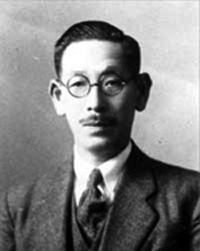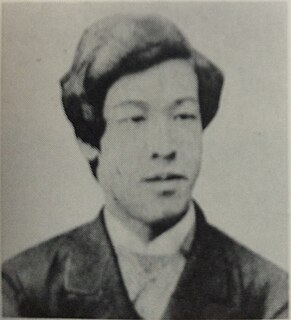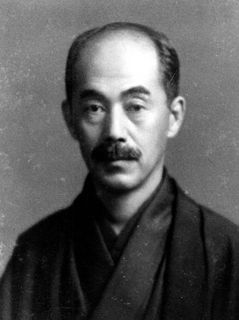 W
WIkuhiko Hata is a Japanese historian. He acquired his PhD at the University of Tokyo and has taught history at several universities. He is the author of a number of influential and well-received scholarly works, particularly on topics related to Japan's role in the Second Sino-Japanese War and World War II.
 W
WKyōsuke Kindaichi was a Japanese linguist from Morioka, Iwate Prefecture. He is chiefly known for his dictations of yukar, or sagas of the Ainu people, as well as his study of the Matagi dialect. Linguist Haruhiko Kindaichi was his son. His grandson is Keio University Professor Emeritus, Russian scholar, and president of University of Nagano, Masumi Kindaichi.
 W
WKūkai, also known posthumously as Kōbō Daishi , was a Japanese Buddhist monk, civil servant, engineer, scholar, poet, artist and calligrapher who founded the esoteric Shingon school of Buddhism. He travelled to China, where he studied Tangmi under the monk Huiguo. Upon returning to Japan, he founded Shingon—the Japanese branch of Vajrayana Buddhism. With the blessing of several Emperors, Kūkai was able to preach Shingon teachings and found Shingon temples. Like other influential monks, Kūkai oversaw public works and constructions. Mount Kōya was chosen by him as a holy site, and he spent his later years there until his death in 835 AD.
 W
WMinamoto no Shitagō was a mid Heian waka poet, scholar and nobleman. He was the original compiler of the Wamyō Ruijushō, the first Japanese dictionary organized into semantic headings. He was designated as one of the Thirty-six Poetry Immortals for his distinguished poetic accomplishments. In addition to the Wamyō Ruijushō, his remaining works include a poetry collection known as the Minamoto no Shitagōshū (源順集). Some scholars claim that he is the author of the Taketori Monogatari. Ziro Uraki also posits him as a possible author of Utsuho Monogatari in the foreword to his English translation of that work.
 W
WTetsuji Morohashi was an important figure in the field of Japanese language studies and Sinology. He is best known as chief editor of the Dai Kan-Wa jiten, a comprehensive dictionary of Chinese characters, or kanji.
 W
WHajime Nakamura was a Japanese Orientalist, Indologist, philosopher and academic of Vedic, Hindu and Buddhist scriptures.
 W
WNishi Amane was a philosopher in Meiji period Japan who helped introduce Western philosophy into mainstream Japanese education.
 W
WNitobe Inazō was a Japanese agricultural economist, author, educator, diplomat, politician, and Christian during the pre-World War II period.
 W
WŌtsuki Fumihiko was a Japanese lexicographer, linguist, and historian. He is best known for two Japanese-language dictionaries that he edited, Genkai and its successor Daigenkai, and for his studies of Japanese grammar.
 W
WYamada Bimyō , born Yamada Taketarō , was a Japanese novelist.
 W
WKunio Yanagita was a Japanese scholar and considered the father of Japanese native folkloristics, or minzokugaku.